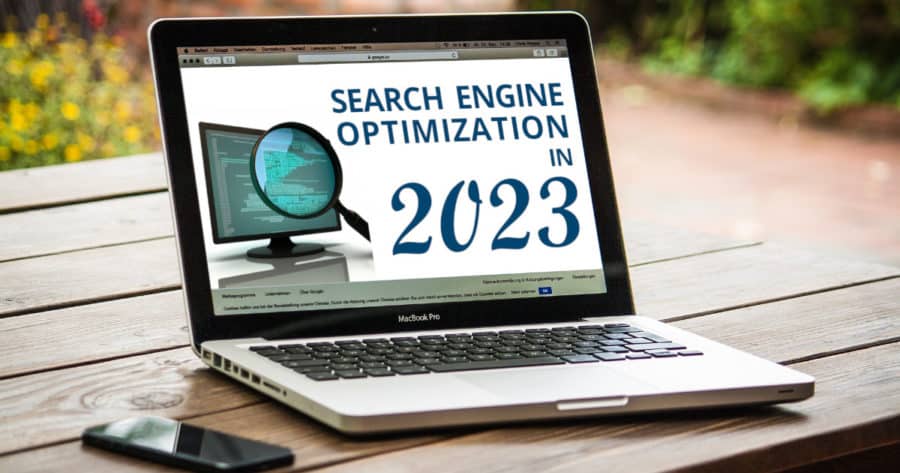As the new year begins, a lot of business owners are looking back at what did and didn’t work for their business. Search Engine Optimization is a very successful marketing angle for thousands of local businesses around the country. With Google algorithm changing multiple times every year, it can be difficult for business owners to keep up with the changes from the last couple years. Here’s a summary of what to expect for SEO in 2023.
Understanding Search Engine Optimization
SEO stands for Search Engine Optimization. It is the practice of improving the ranking of a website on search engines like Google, Bing, and Yahoo. When a user searches for a particular term or phrase, the search engine will return a list of results that it thinks are most relevant to the user’s query. The higher a website appears on this list, the more likely it is to be visited by the user.
Look at this from the viewpoint of Google. They are trying to find the best answer for each query, and they use everything at their disposal to help make the best decisions.
There are several factors that search engines consider when ranking websites. These include the quality and relevance of the website’s content, the structure and organization of the website, and the number and quality of external links pointing to the website. By optimizing these and other factors, it is possible to improve the ranking of a website on search engines and increase its visibility to potential users.

Download Your Free Guide Now!
Keywords
One of the most important aspects of SEO is keyword research. Keywords are the words and phrases that users enter into search engines when looking for information. In order to rank well for these keywords, it is important to include them in the content of your website.
To find relevant keywords, you can use tools like the Google Keyword Planner or SEMrush. These tools allow you to enter a seed keyword and see a list of related keywords, along with their search volume and competition level. You can then use this information to identify the keywords that are most relevant to your website and that have a high search volume but low competition.
Once you have identified your target keywords, you should include them in the titles and headings of your website’s pages, as well as in the body of your content. However, it is important to use these keywords naturally and avoid “keyword stuffing,” which is the practice of overusing keywords in an attempt to manipulate search rankings.
On-page and Off-page Search Engine Optimization

In addition to keyword research, there are other important aspects of SEO to consider. On-page optimization refers to the practice of optimizing the individual pages of your website in order to improve their ranking on search engines. This includes optimizing the titles and headings, using alt tags on images, and using internal linking to connect related pages on your website.
By following these SEO best practices, you can improve the ranking of your website on search engines and increase its visibility to potential users.
On-Site SEO
On-site SEO refers to the practice of optimizing the individual pages of a website in order to improve its ranking on search engines like Google, Bing, and Yahoo. There are several factors that search engines consider when ranking websites, and optimizing these factors can help to improve a website’s ranking and increase its visibility to potential users.
Some of the key elements of on-site SEO include:
- Page titles and headings: The title and headings of a webpage should include relevant keywords and accurately reflect the content of the page.
- Meta descriptions: The meta description is a short summary of a webpage that appears in the search results. It should include relevant keywords and accurately describe the content of the page.
- Image alt tags: Alt tags are used to describe the content of an image. They should include relevant keywords and accurately describe the image.
- Internal linking: Internal linking is the practice of linking to other pages on the same website. This helps search engines understand the structure and organization of the website and can improve its ranking.
By optimizing these and other on-site elements, it is possible to improve the ranking of a website on search engines and increase its visibility to potential users.
Off-Site SEO
Off-site SEO refers to the practice of building external links to a website from other websites. These links serve as “votes of confidence” for the website and can help to improve its ranking on search engines.
There are several ways to build links to a website. Some common methods include:
- Guest blogging: This involves writing an article for another website and including a link back to your own website.
- Directory submissions: Submitting your website to online directories can help to build links and improve its visibility.
- Social media: Sharing links to your website on social media platforms like Facebook, Twitter, and LinkedIn can help to build links and drive traffic to your website.
- Influencer outreach: Reaching out to influencers or industry experts and asking them to link to your website can help to build high-quality, relevant links.
It is important to focus on building high-quality, relevant links from reputable websites, rather than trying to game the system with low-quality or spammy links. By building a strong network of external links, it is possible to improve the ranking of a website on search engines and increase its visibility to potential users.
This is a collection of useful tips on what you can do today to get your website get into Google’s index.
Video Explanation of SEO in 2023
Following these steps is the foundation to building a great online presence in 2023. Here’s to increasing not only your website visitors, but also your new customers and clients from the Search Engines in 2023!
Ashton Sanders
Websites in a Flash

